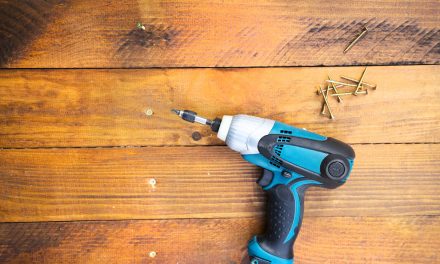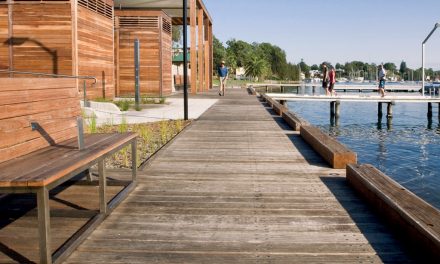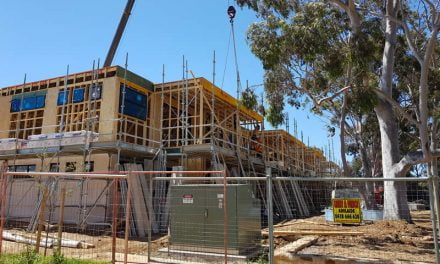Our discussion focused on whether moisture testing should occur before you are awarded the contract or after you win the job, in which case you have to ensure that your contract contains a margin for such extras. An increasing amount of tender documents call for moisture testing as part of the tender process and while this allows for more accurate quoting, it places the expensive cost of moisture testing back on to the prospective contractor. This conundrum, along with some ambiguity about what represents a moisture test and at what point it should be conducted, continually causes concern in the competitive timber flooring market.
In 2012 the vinyl flooring industry released the updated industry standard AS1884. It contained a new bench mark for the testing of concrete substrates American Society for Testing and Materials (ASTM) F2170. Other sectors of the flooring industry have subsequently been obliged to use this form of moisture testing on concrete substrates. However, despite this new testing method being the new bench mark it has not been incorporated into timber flooring standards across the board. As a result there is now conflicting information being given to contractors and installers in regard to the accepted process.
In preparing for our presentation we needed to feel confident in our research and understanding of the current benchmarks, so a call to Mark Heath from the Moisture Meter Company was our first port of call. Mark was very helpful in providing us with
a lot of up to date information about the machinery and processes for testing.
When we compared this information to the adhesive manufacturer’s guides we noticed that some still contained recommendations as follows:
- If a slab passes the 24 hour taped plastic sheet test, and the slab is older than four months, then test to show that moisture transmission is <15 g/m2 /24 hours.
- If the slab does not pass the 24 hour taped test but is more than 60 days old, then apply one coat of their moisture barrier and test that moisture transmission rate is <1,515 g/m2 or apply a second coat of moisture barrier.
The 24 hour taped plastic sheet test was once standard practise, when a 600 mm square of plastic was taped to the floor using a moisture resistant tape, e.g. duct tape, and moisture present in the slab would be drawn to the surface. After
24 hours the plastic was removed and if the surface of the concrete was darker than the surrounding floor then further investigation was necessary. Despite its wide use, this type of test is purely subjective and is lacking the means to provide quantifiable information.
It is possible to gather the relative assessable information though moisture testing in accordance with ASTM F2170 and as cited in the vinyl flooring standard AS1884, but the process is costly and invasive. “˜Appendix A: Testing for Moisture Content’ in Substrates A2.1 Concrete Substrates states a substrate shall be considered sufficiently dry when measurements taken at 40 per cent depth of the substrate do not exceed 75 per cent relative humidity. The required holes are drilled into the concrete slab, with moisture sensors fitted “three test sensors for the first 100 m2 and at least one additional test sensor for each additional 100m2″.
We have had mixed results working with the equipment needed to drill a hole to a depth of 40 per cent of a slab, and the hole for the sensor has to be precise and clean to house the sensor correctly. We used a series of drill bits and gradually went larger until we were confident that the large drill bit wouldn’t bounce around, while others we have spoken with run a bead of silicon around the sensor, consequently trapping air and moisture so that an accurate reading is achievable.
It is not hard to envisage how this type of moisture testing might be considered untenable from a practical and economic perspective, as it is not unusual for numerous organisations to enter a tender submission for a project.
It’s interesting that although the only flooring standard to specify ASTM F2170 is in the vinyl industry, architects and specifiers are requesting this test in their tender documents.
Prior to the introduction of this standard, electrical resistance and impedance meters were recognised as the industry benchmark for determining the moisture content of concrete. Although neither test is described in an ASTM standard, instruments of this type are easy to use, non-invasive, and provide instant readings, yet they are not without their limitations.
Test sites should be sanded back to remove contaminants and minimise the effect of concrete additives and curing compounds which can cause false readings. While the information provided by this type of equipment could be considered more indicative than subjective or quantitative it is perhaps a more appropriate test in the tendering stage when many projects are often in the embryo stage.
When all said and done the type of moisture meter is less important than its ability to provide accurate and relevant information in any situation. This may imply that the best option is to employ the latest technology, but let’s not “˜throw the baby out with the bathwater’, there is a place for each of the methods described in this article.
The method employed to detect and determine the extent of moisture in a concrete substrate will depend on the advancement of the project, the procedures to be undertaken, and will be guided by the product manufacturers or suppliers instructions.
Ray and Sharon Brice specialise in mediation training and project management. They have four decades experience in the flooring industry.
Phone: 0407 591 697 | Email: rayandsharon@timbertradernews.com
“An increasing amount of tender documents call for moisture testing as part of the tender process.”












